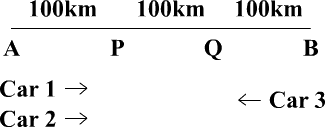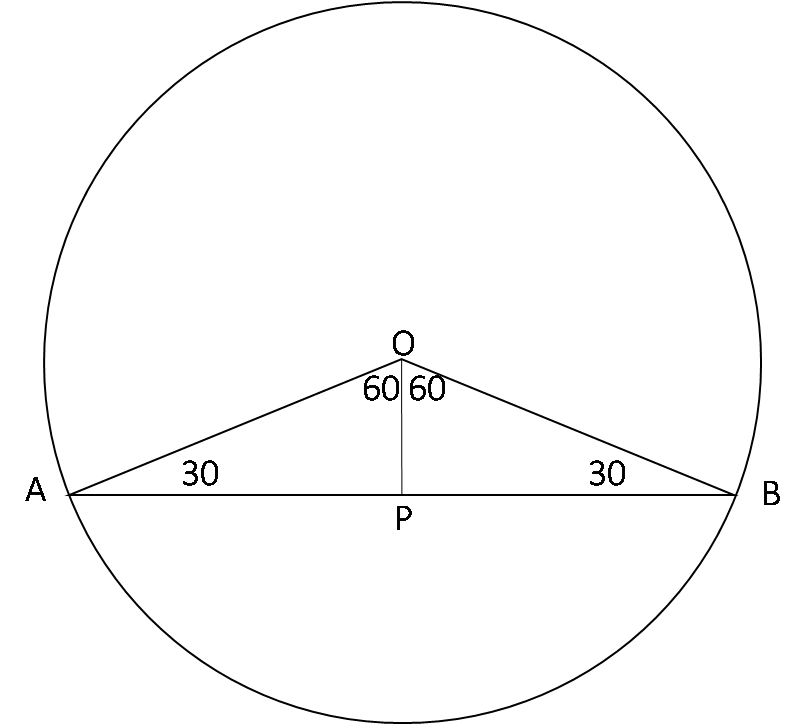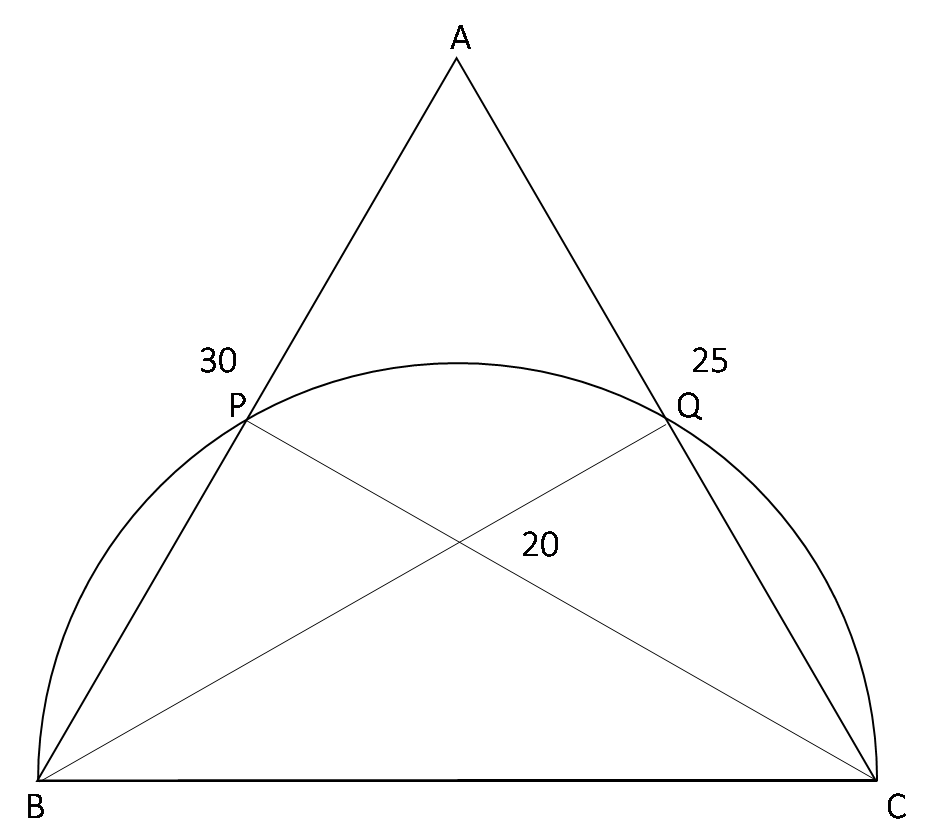CAT 2018 QA Slot 2 | Previous Year CAT Paper
Join our Telegram Group for CAT Preparation.
On a long stretch of east-west road, A and B are two points such that B is 350 km west of A. One car starts from A and another from B at the same time. If they move towards each other, then they meet after 1 hour. If they both move towards east, then they meet in 7 hrs. The difference between their speeds, in km per hour, is
Answer: 50
Join our Telegram Group for CAT Preparation.
Explanation :
If both cars travel towards east, they meet in 7 hours. Therefore the faster car starting from A covers the distance of separation of 350 km in 7 hours. Therefore,
Hence, 50.
Workspace:
Points A and B are 150 km apart. Cars 1 and 2 travel from A to B, but car 2 starts from A when car 1 is already 20 km away from A. Each car travels at a speed of 100 kmph for the first 50 km, at 50 kmph for the next 50 km, and at 25 kmph for the last 50 km. The distance, in km, between car 2 and B when car 1 reaches B is
Answer: 5
Join our Telegram Group for CAT Preparation.
Explanation :
The speeds of both the cars in the three legs of the journey are equal. Therefore the second car will reach point B as many minutes after the first car as it started after the first car.
For the first 50 km of the journey, the speed of the cars is 100 kmph. Therefore, the first car reaches a distance of 20 km
from point A after = hours
= 0.2 × 60 = 12 minutes.
When the first car reaches point B, the second car is 12 minutes away from point B. The speed of the car in the last 50 km distance is 25 kmph. Therefore the distance of the second car from point
Hence, 5.
Workspace:
The arithmetic mean of x, y and z is 80, and that of x, y, z, u and v is 75, where u = (x + y)/2 and v = (y + z)/2. If x ≥ z, then the minimum possible value of x is
Answer: 105
Join our Telegram Group for CAT Preparation.
Explanation :
As the AM of x, y and z is 80,
⇒ x + y + z = 80 × 3 = 240 … (1)
As the AM of x, y, z, u and v is 75
⇒ x + y + z + u + v = 75 × 5 = 375 … (2)
Subtracting equation (1) from (2), we get
u + v = 135
∴ x + 2y + z = 270 … (3)
Solving equations (1) and (3), we get
⇒ y = 30
∴ x + z = 210.
Now, since x ≥ z, the minimum value of x = 105.
Hence, 105.
Workspace:
A water tank has inlets of two types A and B. All inlets of type A when open, bring in water at the same rate. All inlets of type B, when open, bring in water at the same rate. The empty tank is completely filled in 30 minutes if 10 inlets of type A and 45 inlets of type B are open, and in 1 hour if 8 inlets of type A and 18 inlets of type B are open. In how many minutes will the empty tank get completely filled if 7 inlets of type A and 27 inlets of type B are open?
Answer: 48
Join our Telegram Group for CAT Preparation.
Explanation :
Suppose the inlet pipes of type A fill in water at the rate ‘a’ units per minute and the inlet pipes of type B fill in water at the rate ‘b’ units per minute.
Therefore we have the following
30(10a + 45b) = 60(8a + 18b)
∴ 300a + 1350b = 480a + 1080b
∴ 180a = 270b
∴ a = 1.5b
Total capacity of the tank
= 300a + 1350b = 300(1.5b) + 1350b
= 1800b
If 7 inlet pipes of type A and 27 inlet pipes of type B are opened, the volume of water filled in every minute
= 7a + 27b = 7(1.5b) + 27b = 37.5b
Therefore the number of minutes taken to fill the tank
Hence, 48.
Workspace:
Gopal borrows Rs. X from Ankit at 8% annual interest. He then adds Rs. Y of his own money and lends Rs. X+Y to Ishan at 10% annual interest. At the end of the year, after returning Ankit’s dues, the net interest retained by Gopal is the same as that accrued to Ankit. On the other hand, had Gopal lent Rs. X+2Y to Ishan at 10%, then the net interest retained by him would have increased by Rs. 150. If all interests are compounded annually, then find the value of X + Y.
Answer: 4000
Join our Telegram Group for CAT Preparation.
Explanation :
The only difference in the two situations is that in the second situation, Gopal lent Rs. Y more to Ishan than in the first situation. Therefore the additional interest retained by Gopal = 0.1Y.
Therefore 0.1.Y = 150 or Y = 1500.
Now, Ankit lent Gopal Rs. X at 8% interest. Therefore the interest retained by Ankit = Rs. 0.08X.
Gopal lent Ishan Rs. (X + 1500) at 10% interest.
Therefore the interest retained by Gopal = 0.1X + 150 - 0.08X = 0.02X + 150
Therefore, 0.08X = 0.02X + 1500 or X = 2500.
Therefore the value of X + Y = 4000.
Hence, 4000.
Workspace:
Ramesh and Ganesh can together complete a work in 16 days. After seven days of working together, Ramesh got sick and his efficiency fell by 30%. As a result, they completed the work in 17 days instead of 16 days. If Ganesh had worked alone after Ramesh got sick, in how many days would he have completed the remaining work?
- A.
12
- B.
11
- C.
13.5
- D.
14.5
Answer: Option C
Join our Telegram Group for CAT Preparation.
Explanation :
Suppose ‘R’ and ‘G’ are the number of units of work completed by Ramesh and Ganesh everyday. Therefore the total work to be completed = 16(R + G) = 16R + 16G
For the first 7 days, both work at 100% efficiency and for the remaining 10 days, Ramesh works at 70% efficiency. Therefore the total work to be completed = 7(R + G) + 10(0.7R + G) = 14R + 17G
∴ 16R + 16G = 14R + 17G or G = 2R
Now if only Ganesh had worked after Ramesh fell sick:
Work to be done = 9(G + R) = 9(2R + R) = 27R
Efficiency of Ganesh = G = 2R
∴ Time taken to finish the remaining work = 27R/2R = 13.5 days.
Hence, option (c).
Workspace:
Points A, P, Q and B lie on the same line such that P, Q and B are, respectively, 100 km, 200 km and 300 km away from A. Cars 1 and 2 leave A at the same time and move towards B. Simultaneously, car 3 leaves B and moves towards A. Car 3 meets car 1 at Q, and car 2 at P. If each car is moving in uniform speed then the ratio of the speed of car 2 to that of car 1 is
- A.
1 : 2
- B.
2 : 7
- C.
1 : 4
- D.
2 : 9
Answer: Option C
Join our Telegram Group for CAT Preparation.
Explanation :
We have the following:

The cars 3 and 1 meet at point Q. Therefore, the car 3 covers 100 km in the time the car 1 covers 200 km. Therefore the ratio of the speeds of cars 3 and 1 i.e., C3 : C1 = 1 : 2.
The cars 2 and 3 meet at point P. Therefore, the car 2 covers 100 km in the time the car 3 covers 200 km. Therefore the ratio of the speeds of cars 3 and car 2 i.e., C3 : C2 = 2 : 1.
Combining the two statements, the ratio of the speeds of three cars i.e., C1: C2 : C3 = 4 : 1 : 2.
Hence, option (c).
Workspace:
A jar contains a mixture of 175 ml water and 700 ml alcohol. Gopal takes out 10% of the mixture and substitutes it by water of the same amount. The process is repeated once again. The percentage of water in the mixture is now
- A.
25.4
- B.
20.5
- C.
35.2
- D.
30.3
Answer: Option C
Join our Telegram Group for CAT Preparation.
Explanation :
Originally, the volume of alcohol = 4 times the volume of water. Therefore, original percentage of alcohol = 80% and original volume of water = 20%.
When 10% of the mixture is removed and replaced with water, the percentage of alcohol remained in the mixture
= = 64.8%
Therefore the percentage of water in the mixture = (100 - 64.8)% = 35.2%.
Hence, option (c).
Workspace:
A tank is emptied everyday at a fixed time point. Immediately thereafter, either pump A or pump B or both start working until the tank is full. On Monday, A alone completed filling the tank at 8 pm. On Tuesday, B alone completed filling the tank at 6 pm. On Wednesday, A alone worked till 5 pm, and then B worked alone from 5 pm to 7 pm, to fill the tank. At what time was the tank filled on Thursday if both pumps were used simultaneously all along?
- A.
4:36 pm
- B.
4:12 pm
- C.
4:48 pm
- D.
4:24 pm
Answer: Option D
Join our Telegram Group for CAT Preparation.
Explanation :
The time taken by pump A alone to fill the tank completely = t hours.
The time taken by pump B alone to fill the tank completely = ‘t - 2’ hours.
On Wednesday, pump A was used for 3 hour less and pump B was used for 2 hours to complete the remaining work.
⇒ Work done by A in 3 hours = Work done by B in 2 hours.
⇒ efficiency of A : efficiency of B = 2 : 3
Let efficiency of A be '2x' and that of B be '3x'.
Now, total work is done by B in (t - 2) hours and by A in t hours.
⇒ 3x × (t - 2) = 2x × t
⇒ 3(t - 2) = 2t
⇒ t = 6 hours
∴ The tank starts filling at 2 pm.
If both pumps start filling, their combined efficiency = 5x
Total work to be done = 3x(t - 2) = 12x
⇒ Time taken to fill the tank = 12x/5x = 2.4 hours = 2 hours 24 minutes.
Therefore on Thursday, the tank will be completely full at 4.24 pm.
Hence, option (d).
Workspace:
The strength of a salt solution is p% if 100 ml of the solution contains p grams of salt. If three salt solutions A, B, C are mixed in the proportion 1 : 2 : 3, then the resulting solution has strength 20%. If instead the proportion is 3 : 2 : 1, then the resulting solution has strength 30%. A fourth solution, D, is produced by mixing B and C in the ratio 2 : 7. The ratio of the strength of D to that of A is?
- A.
1 : 3
- B.
1 : 4
- C.
2 : 5
- D.
3 : 10
Answer: Option A
Join our Telegram Group for CAT Preparation.
Explanation :
Suppose the concentrations of the solutions A, B and C are ‘a’, ‘b’ and ‘c’ respectively.
If the three solutions are mixed in the ratio 1 : 2 : 3, the resultant solution has 20% concentration. Therefore, we have
or a + 2b + 3c = 120 ...(1)
If the three solutions are mixed in the ratio 3 : 2 : 1, the resultant solution has 30% concentration. Therefore, we have
or 3a + 2b + c = 180 ...(2)
Multiplying equation (1) with 3 and (2) with 2 and equating both, we get
3a + 6b + 9c = 6a + 4b + 2c
⇒ 2b + 7c = 3a
Now, concentration of solution D = = =
Therefore the ratio of D's concentration to A's concentration
Hence, option (a).
Workspace:
Let a1, a2, ... , a52 be positive integers such that a1 < a2 < ... < a52. Suppose, their arithmetic mean is one less than the arithmetic mean of a2, a3, ..., a52. If a52 = 100, then the largest possible value of a1 is
- A.
45
- B.
23
- C.
48
- D.
20
Answer: Option B
Join our Telegram Group for CAT Preparation.
Explanation :
Given numbers are a1, a2, a3,..., a51,100.
If the arithmetic mean of these 52 numbers is ‘x’, we have
a1 + a2 + a3 + ... + a51 + 100 = 52x ...(1)
Given: the arithmetic mean of a2, a3, a4,...,a51, 100 is ‘x + 1’
a2 + a3 + ⋯ + a51 + 100 = 51(x + 1) = 51x + 51 ...(2)
Solving (1) and (2), we get:
∴ a1 = x − 51 ...(3)
Now for a1 to be maximum possible, x has to be maximum possible.
For x to be maximum possible each of a2, a3, ..., till a51 has to be maximum possible. But they are also distinct integers.
∴ Maximum value of
a51 = 99 [it has to be an integer less than a52]
a50 = 98 [it has to be an integer less than a51]
...
a2 = 50
⇒ a2, a3, ..., a52 are consecutinve integers from 50 till 100.
⇒ Average of (a2, a3, ..., a52) = 1/2 × (50 + 100) = 75 = x + 1 [From (2)]
⇒ x = 74
From (3)
⇒ a1 = 74 - 51 = 23
Hence, option (b).
Workspace:
The scores of Amal and Bimal in an examination are in the ratio 11 : 14. After an appeal, their scores increase by the same amount and their new scores are in the ratio 47 : 56. The ratio of Bimal’s new score to that of his original score is
- A.
4 : 3
- B.
3 : 2
- C.
8 : 5
- D.
5 : 4
Answer: Option A
Join our Telegram Group for CAT Preparation.
Explanation :
Suppose the original scores of Amal and Bimal are 11x and 14x respectively.
Suppose ‘y’ is the increase in their marks.
Therefore the new marks of Amal and Bimal are ‘11x + y’ and ‘14x + y’ respectively.
Therefore, we have
∴ 616x + 56y = 658x + 47y
Solving for x and y, we get 14x = 3y
Therefore Bimal’s old marks = 14x = 3y and his new marks = 14x + y = 4y. Therefore the required ratio = 4:3.
Hence, option (a).
Workspace:
There are two drums, each containing a mixture of paints A and B. In drum 1, A and B are in the ratio 18 : 7. The mixtures from drums 1 and 2 are mixed in the ratio 3 : 4 and in this final mixture, A and B are in the ratio 13 : 7. In drum 2, then A and B were in the ratio
- A.
220 : 149
- B.
251 : 163
- C.
229 : 141
- D.
239 : 161
Answer: Option D
Join our Telegram Group for CAT Preparation.
Explanation :
Suppose the mixture from drum 1 = 300x litres and the mixture from drum 2 = 400x litres. Therefore, we have the following

Therefore the volume of Paint A in Drum B = 455x – 216x = 239x and the volume of Paint B in Drum B = 245x − 84x = 161x.
Therefore the required ratio is 239 : 161.
Hence, option (d).
Workspace:
A 20% ethanol solution is mixed with another ethanol solution, say, S of unknown concentration in the proportion 1 : 3 by volume. This mixture is then mixed with an equal volume of 20% ethanol solution. If the resultant mixture is a 31.25% ethanol solution, then the unknown concentration of S is
- A.
52%
- B.
50%
- C.
48%
- D.
55%
Answer: Option B
Join our Telegram Group for CAT Preparation.
Explanation :
A 20% solution is mixed with x% solution in the ratio 1 : 3
Let 10 liters of 20% solution is mixed with 30 liters of x% solution.
Now, the total volume of the mixture = 40 liters.
This solution is mixed with 20% solution having equal volume.
∴ A total of 50 liters of 20% solutio is mixed with 30 liters of x% solution.
⇒ Final concentration = 31.25% =
⇒ 2500 = 1000 + 30x
⇒ x = 50%
Hence, option (b).
Workspace:
A triangle ABC has area 32 sq units and its side BC, of length 8 units, lies on the line x = 4. Then the shortest possible distance between A and the point (0, 0) is
- A.
8 units
- B.
4 units
- C.
2√2 units
- D.
2√4 units
Answer: Option B
Join our Telegram Group for CAT Preparation.
Explanation :
The area of the triangle is 32 sq units.
Therefore, 32 = ½ × BC × height
Given, BC = 8
⇒ Height = = 8 cm
Therefore Height of the triangle = 8 cm.
Side BC lies on the line x = 4 or it is parallel to y-axis. Therefore the height of the triangle will be parallel to x axis. In order to minimize the distance of point A from the origin, point A should lie on the x-axis as shown.
Hence, point A is at a distance of 8 units from x = 4 and lies on x-axis.

Therefore point A is (-4,0) and the distance of point A from the origin = 4 units.
Hence, option (b).
Workspace:
A chord of length 5 cm subtends an angle of 60° at the centre of a circle. The length, in cm, of a chord that subtends an angle of 120° at the centre of the same circle is
- A.
- B.
- C.
2π
- D.
8
Answer: Option A
Join our Telegram Group for CAT Preparation.
Explanation :
The triangle formed by joining the endpoints of the chord of a circle with the center of the circle is an isosceles triangle because the two sides of the triangle (radii of the circle) are congruent. If the angle subtended by the chord at the center of the circle is 60 degrees, the triangle is an equilateral triangle. Therefore the side of the triangle and the radius of the circle is equal to the side of the triangle = 5 cm.
Now we have the following

OP is perpendicular to the chord AB. Therefore P is the midpoint of chord AB. Further, OA and OP are the radii of the circle. Therefore triangles OAP and OBP are congruent. Therefore triangle OAP and OBP are 30-60-90 triangles.
We have,
Therefore,
Therefore,
Hence, option (a).
Workspace:
A parallelogram ABCD has area 48 sqcm. If the length of CD is 8 cm and that of AD is s cm, then which one of the following is necessarily true?
- A.
s ≠ 6
- B.
s ≥ 6
- C.
5 ≤ s ≤ 7
- D.
s ≤ 6
Answer: Option B
Join our Telegram Group for CAT Preparation.
Explanation :

Area of parallelogram = Base × Height
∴ 48 = 8 × Height
∴ Height = 6 cm
If the parallelogram is a rectangle, AD is its height. In that case, s = 6.
Otherwise, using Pythagoras theorem, AD > 6 or s > 6.
Therefore, s ≥ 6.
Hence, option (b).
Workspace:
The area of a rectangle and the square of its perimeter are in the ratio 1 ∶ 25. Then the lengths of the shorter and longer sides of the rectangle are in the ratio ?
- A.
1 : 3
- B.
2 : 9
- C.
1 : 4
- D.
3 : 8
Answer: Option C
Join our Telegram Group for CAT Preparation.
Explanation :
Suppose l = length of the rectangle and b = breadth of the rectangle.
Therefore, the area of the rectangle = lb and the perimeter of the rectangle = 2(l + b)
Therefore,
Substituting the options, we can see that only option (c) i.e., 1 : 4 matches.
Hence, option (c).
Workspace:
From a rectangle ABCD of area 768 sqcm, a semicircular part with diameter AB and area 72π sqcm is removed. The perimeter of the leftover portion, in cm, is:
- A.
88 + 12π
- B.
82 + 24π
- C.
80 + 16π
- D.
86 + 8π
Answer: Option A
Join our Telegram Group for CAT Preparation.
Explanation :
The area of the semicircle = 72π sq. cm. If ‘r’ is the radius of the semi-circular portion removed,
We get
Therefore r = 12 cm.
Therefore the diameter of the semi-circle = AB = 24 cm.
Area of rectangle ABCD = 768 sq. cm.
Therefore the length of side AC

The perimeter of the leftover portion
= Perimeter of the semicircle + l(AD) + l(DC) + l(CB)
= 12π + 32 + 24 + 32 = 88 + 12π
Hence, option (a).
Workspace:
On a triangle ABC, a circle with diameter BC is drawn, intersecting AB and AC at points P and Q, respectively. If the lengths of AB, AC, and CP are 30 cm, 25 cm, and 20 cm respectively, then the length of BQ, in cm, is
Answer: 24
Join our Telegram Group for CAT Preparation.
Explanation :

Since points P and Q lie on the circumference of the circle drawn with BC as diameter, angles BPC and BQC are right angled triangles.
Now, area of triangle ABC = =
Therefore, BQ = = = 24
Hence, 24.
Workspace:
If p3 = q4 = r5 = s6, then the value of logs(pqr) is equal to
- A.
47/10
- B.
16/5
- C.
24/5
- D.
1
Answer: Option A
Join our Telegram Group for CAT Preparation.
Explanation :
Given, p3 = q4 = r5 = s6 = k
⇒ p3 = k
⇒ p = k1/3
Similarly,
q = k1/4
r = k1/5
s = k1/6
pqr = k1/3 × k1/4 × k1/5 = k1/3 + 1/4 + 1/5 = k47/60
Now, logs(pqr) = logk1/6 k47/60 = 47/10
Hence, option (a).
Workspace:
The smallest integer n for which 4n > 1719 holds, is closest to
- A.
33
- B.
37
- C.
39
- D.
35
Answer: Option C
Join our Telegram Group for CAT Preparation.
Explanation :
We have, 4n > 1719
Taking log on both sides to the base 4,
n × log4 4 > 19 × log4 17
Now, 17 > 42.
∴ log4 17 > 2.
⇒ n × log4 4 > 19 × log4 17 > 19 × 2
Also, log4 4 = 1
∴ n > 38.
Hence, option (c).
Workspace:
- A.
-4
- B.
10
- C.
0
- D.
1/2
Answer: Option D
Join our Telegram Group for CAT Preparation.
Explanation :
- + - + - +
= - + - + - +
= = =
Hence, option (d).
Workspace:
If the sum of squares of two numbers is 97, then which one of the following cannot be their product?
- A.
16
- B.
48
- C.
–32
- D.
64
Answer: Option D
Join our Telegram Group for CAT Preparation.
Explanation :
Given: a2 + b2 = 97.
AM ≥ GM
⇒ ≥
⇒ 48.5 ≥ |a × b|
⇒ 48.5 ≥ a × b ≥ -48.5
Out of the given options, 64 definitely lies outside this range.
Hence, option (d).
Workspace:
How many two-digit numbers, with a non-zero digit in the units place, are there which are more than thrice the number formed by interchanging the positions of its digits?
- A.
6
- B.
8
- C.
7
- D.
5
Answer: Option A
Join our Telegram Group for CAT Preparation.
Explanation :
Let the original number be 'xy' = 10x + y and
the number formed by reversing the digits = 'yx' = 10y + x.
We have the following:
10x + y > 3(10y + x)
∴ x >
When y = 1, x = 5, 6, 7, 8 or 9 (Total 5 values)
When y = 2, x = 9 (Total 1 value)
If y > 3, x has to be a 2 digit number which is not possible.
∴ The required answer is 5 + 1 = 6.
Hence, option (a).
Workspace:
If N and x are positive integers such that NN = 2160 and N2 + 2N is an integral multiple of 2x, then the largest possible x is
Answer: 10
Join our Telegram Group for CAT Preparation.
Explanation :
From observation, NN = 2160 = 3232 or N = 32.
Now, N2 + 2N = 322 + 232 = (25 )2 + 232
= 210 + 232 = 210 (1 + 222 ).
Here, (1 + 222 ) is an odd number, hence the higest power of 2 is 10.
Therefore the largest value of x = 10.
Hence, 10.
Workspace:
If a and b are integers such that 2x2 − ax + 2 > 0 and x2 − bx + 8 ≥ 0 for all real numbers x, then the largest possible value of 2a − 6b is
Answer: 36
Join our Telegram Group for CAT Preparation.
Explanation :
We have to maximize the value of 2a - 6b. Therefore let us look for the largest possible value of a and the smallest possible value of b.
If 2x2 – ax + 2 > 0 for all value of x, the graph of 2x2 – ax + 2 is above the x-axis or the roots of the quadratic equations 2x2 – ax + 2 = 0 are imaginary or its discriminant is less than 0.
∴ We have a2 – 16 < 0 or a2 < 16 or –4 < a < 4.
⇒ The largest possible value of a is 3.
If x2 – bx + 8 ≥ 0, the discriminant of the equation is less than or equal to zero.
⇒ b2 - 32 ≤ 0
⇒ -4√2 ≤ b ≤ 4√2
⇒ -5.64 ≤ b ≤ 5.64
∴ The smallest possible value of b is –5.
Therefore the maximum possible value of 2a - 6b = 2(3) – 6(–5) = 36.
Hence, 36.
Workspace:
The smallest integer n such that n3 – 11n2 + 32n – 28 > 0 is
Answer: 8
Join our Telegram Group for CAT Preparation.
Explanation :
The sum of the coefficients of n3 -11n2 + 32n - 28 is not zero.
Similarly the sum of the odd coefficients of n3 -11n2 + 32n - 28 is not equal to its even coefficients. Therefore it is not divisible by (n - 1) and (n + 1).
If we put n = 2, n3 – 11n2 + 32n – 28 = 8 – 44 + 64 – 28 = 0.
Therefore (n – 2) is a factor of the polynomial n3 - 11n2 + 32n – 28.
We have, (n - 2) is a factor of n3 – 11n2 + 32n – 28
∴ n3 – 11n2 + 32n – 28 = (n - 2)(n2 – 9n + 14) = (n – 2)(n – 2)(n - 7) = (n – 2)2 (n – 7).
Now, we have (n – 2)2 (n – 7) > 0
(n - 2)2 is always greater than 0, when n > 2.
⇒ For (n – 2)2 (n – 7) > 0, (n - 7) should be greater than 0.
⇒ n > 7.
Therefore the smallest integer for which n3 - 11n2 + 32n - 28 > 0 is 8.
Hence, 8.
Workspace:
In a tournament, there are 43 junior level and 51 senior level participants. Each pair of juniors play one match. Each pair of seniors play one match. There is no junior versus senior match. The number of girl versus girl matches in junior level is 153, while the number of boy versus boy matches in senior level is 276. The number of matches a boy plays against a girl is
Answer: 1098
Join our Telegram Group for CAT Preparation.
Explanation :
The number of matches played in a group of ‘n’ peope =
The number of girl vs girl matches in junior level = 153.
Therefore, = 153 ⇒ n = 18
Therefore there are 18 girls at junior level.
⇒ There are 43 - 18 = 25 boys at junior level.
The number of boy vs boy matches in senior level = 276.
Therefore, = 276 ⇒ n = 24
Therefore there are 24 boys at senior level.
⇒ There are 51 - 24 = 27 girls at senior level.
Therefore, we have

Therefore, the number of boys vs girls matches = 25 × 18 + 24 × 27 = 1098
Hence, 1098.
Workspace:
Let t1, t2,… be real numbers such that t1 + t2 + … + tn = 2n2 + 9n + 13, for every positive integer n ≥ 2. If tk = 103, then k equals
Answer: 24
Join our Telegram Group for CAT Preparation.
Explanation :
Sk = 2k2 + 9k + 13
Sk-1 = 2(k-1)2 + 9(k-1) + 13
⇒ Tk = Sk - Sk-1 = 2k2 + 9k + 13 - [2(k-1)2 + 9(k-1) + 13]
⇒ Tk = Sk - Sk-1 = 4k + 7
If tk = 103
⇒ 4k + 7 = 103 or k = 24.
Hence, 24.
Workspace:
Let f(x) = max {5x, 52 – 2x2}, where x is any positive real number. Then the minimum possible value of f(x) is
Answer: 20
Join our Telegram Group for CAT Preparation.
Explanation :
The graph of the function 52 – 2x2 will be of ‘inverted U’ shape, while the graph of the function y = 5x will be a straight line with a positive slope.
Therefore, the minimum value of the required function will be obtained at a point of intersection of y = 52 – 2x2 and y = 5x.
Therefore, 52 – 2x2 = 5x or 2x2 + 5x – 52 = 0.
∴ (x - 4)(2x + 13) = 0
∴ x = 4 or x =
Since x is a positive real number, x = 4.
At x = 4, 5x = 52 – 2x2 = 20
Hence, 20.
Workspace:
The value of the sum 7 × 11 + 11 × 15 + 15 × 19 + ...+ 95 × 99 is
- A.
80730
- B.
80773
- C.
80751
- D.
80707
Answer: Option D
Join our Telegram Group for CAT Preparation.
Explanation :
The first number in the terms are 7, 11, 15, …, 95, which form an AP with a = 7 and d = 4.
The nth term for this AP is Tn = 3 + 4n and the number of terms is
n = + 1 = 23
The second number in the terms are 11,15,19,...,99, which form an AP with a = 11 and d = 4. The nth term for this AP is Tn= 7 + 4n and the number of terms is
n = + 1 = 23
Therefore the required sum
=
=
=
=
= 69184 + 11040 + 483
= 80707
Hence, option (d).
Workspace:
If A = {62n - 35n - 1: n = 1, 2, 3, ...} and B = {35(n - 1) : n = 1,2,3,...} then which of the following is true?
- A.
Every member of A is in B and at least one member of B is not in A
- B.
At least one member of A is not in B
- C.
Every member of B is in A.
- D.
Neither every member of A is in B nor every member of B is in A
Answer: Option A
Join our Telegram Group for CAT Preparation.
Explanation :
For n = 1, A1 = 0
For n = 2, A2 = 1225 = 35 × 35
Also, 62n- 35n - 1 = (36n - 1) - 35n.
The term in the bracket 36n - 1 is always divisible by (36 - 1) or by 35. Similarly 35n is also always divisible by 35. Therefore each term in the set A is divisible by 35. However, not all positive multiples of 35 are present in set A.
For n = 1, B1 = 35(1 - 1) = 0
For n = 2, B2 = 35(2 - 1) = 35 and so on.
Thus all whole number multiples of 35 are present in set B.
Thus every member of set A is present in every member of set B but at least one member of set B is not present in set A.
Hence, option (a).
Workspace:
For two sets A and B, let AΔB denote the set of elements which belong to A or B but not both. If P = {1,2,3,4}, Q = {2,3,5,6,}, R = {1,3,7,8,9}, S = {2,4,9,10}, then the number of elements in (PΔQ)Δ(RΔS) is
- A.
6
- B.
8
- C.
9
- D.
7
Answer: Option D
Join our Telegram Group for CAT Preparation.
Explanation :
The set (PΔQ) = {1,4,5,6}.
The set (RΔS) = {1,2,3,4,7,8,10}
Therefore the set (PΔQ) Δ (RΔS) = {2,3,5,6,7,8,10}.
Thus there are 7 elements in the set.
Hence, option (d).
Workspace:
Feedback
Help us build a Free and Comprehensive Preparation portal for various competitive exams by providing us your valuable feedback about Apti4All and how it can be improved.
 Solution
Solution Discuss
Discuss Report
Report